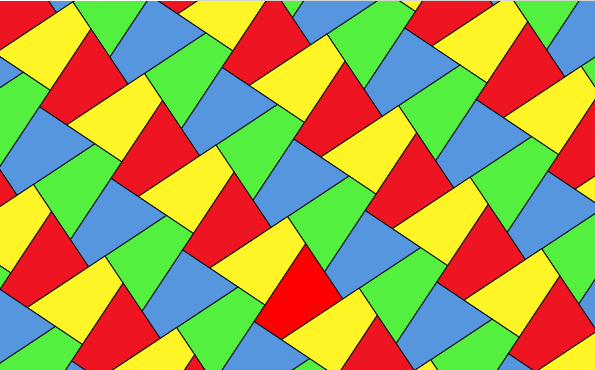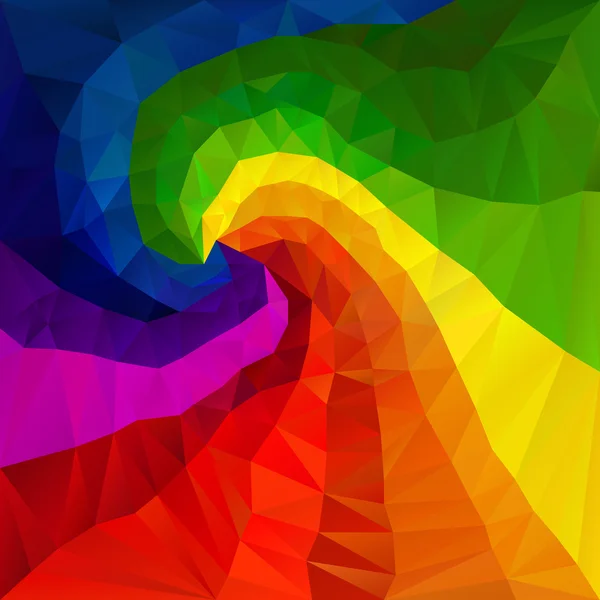

Another spiral tiling was published 1985 by Michael D. The first such pattern was discovered by Heinz Voderberg in 1936 and used a concave 11-sided polygon (shown on the left). Lu, a physicist at Harvard, metal quasicrystals have "unusually high thermal and electrical resistivities due to the aperiodicity" of their atomic arrangements.Īnother set of interesting aperiodic tessellations is spirals. The geometries within five-fold symmetrical aperiodic tessellations have become important to the field of crystallography, which since the 1980s has given rise to the study of quasicrystals. According to ArchNet, an online architectural library, the exterior surfaces "are covered entirely with a brick pattern of interlacing pentagons." An early example is Gunbad-i Qabud, an 1197 tomb tower in Maragha, Iran. The patterns were used in works of art and architecture at least 500 years before they were discovered in the West. Medieval Islamic architecture is particularly rich in aperiodic tessellation. These tessellations do not have repeating patterns. Notice how each gecko is touching six others. The following "gecko" tessellation, inspired by similar Escher designs, is based on a hexagonal grid. By their very nature, they are more interested in the way the gate is opened than in the garden that lies behind it." In doing so, they have opened the gate leading to an extensive domain, but they have not entered this domain themselves. This further inspired Escher, who began exploring deeply intricate interlocking tessellations of animals, people and plants.Īccording to Escher, "Crystallographers have … ascertained which and how many ways there are of dividing a plane in a regular manner. His brother directed him to a 1924 scientific paper by George Pólya that illustrated the 17 ways a pattern can be categorized by its various symmetries. According to James Case, a book reviewer for the Society for Industrial and Applied Mathematics (SIAM), in 1937, Escher shared with his brother sketches from his fascination with 11 th- and 12 th-century Islamic artwork of the Iberian Peninsula.

The most famous practitioner of this is 20 th-century artist M.C. Escher & modified monohedral tessellationsĪ unique art form is enabled by modifying monohedral tessellations.

Printable Tessellation Patterns coloring pages are a fun way for kids of all ages to develop creativity, focus, motor skills and color recognition.
#Irregular tessellation patterns download#
I don't care.A dual of a regular tessellation is formed by taking the center of each shape as a vertex and joining the centers of adjacent shapes. Tessellation Patterns Coloring Pages Download and print these Tessellation Patterns coloring pages for free. Hopefully they still look similar.Īlso I gave the puzzle pieces a flat edge so that they would look more like puzzle pieces. Because I'm using a rectangular grid (more suitable for stocking stitch knitting designs) the dark and light parts are composed of different stitch patterns. These patterns would be perfect tessellations if I were drawing them on a square grid. As I designed them for use with the double knitting technique this is not always optimal so I've also done shaded two tone versions using patterns instead of colours. In these designs the stitch patterns for all tiles remain identical but you need at least three different colours to differentiate them. These patterns give an interesting effect when made up with the double knitting technique because there is little difference between the two sides of the fabric where they would usually have inverse colour schemes. In all these grids the arrangement of stitches that make up the purple shapes are exactly the same as the arrangement of stitches that make up the white shapes. *Well, one or more shapes really but my whole interest in doing this was finding single shapes that would tessellate. Click on a design for details of the repeating unit.

They may look a little dull by themselves, but consider how easy it would be to add a little extra pattern to all of those different repeats. Tessellating patterns are built up by repeating a shape* over and over without spaces.


 0 kommentar(er)
0 kommentar(er)
